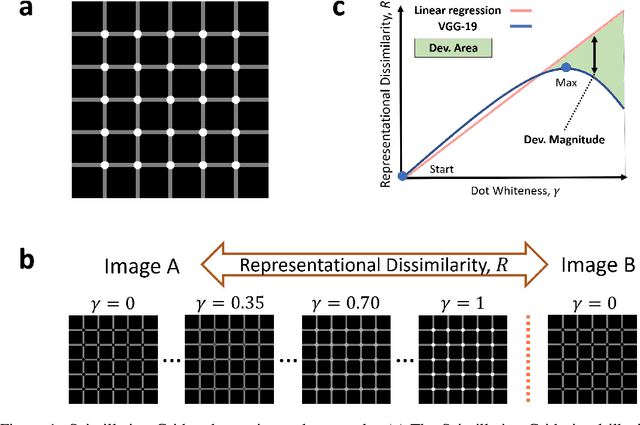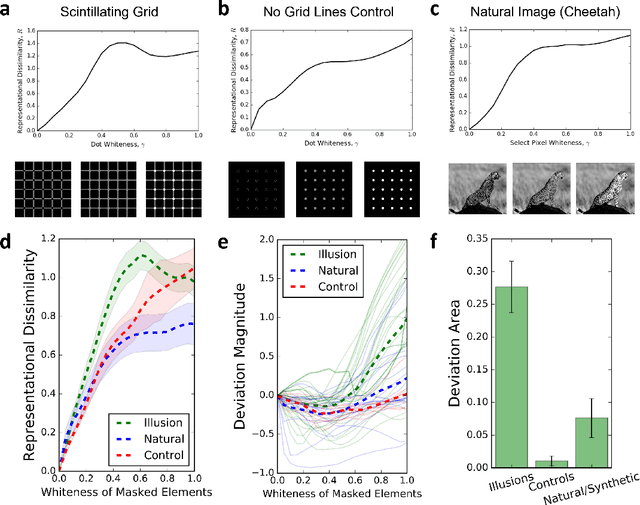ImageNet-trained deep neural network exhibits illusion-like response to the Scintillating Grid
Paper and Code
Aug 05, 2019



Deep neural network (DNN) models for computer vision are now capable of human-level object recognition. Consequently, similarities in the performance and vulnerabilities of DNN and human vision are of great interest. Here we characterize the response of the VGG-19 DNN to images of the Scintillating Grid visual illusion, in which white dots are perceived to be partially black. We observed a significant deviation from the expected monotonic relation between VGG-19 representational dissimilarity and dot whiteness in the Scintillating Grid. That is, a linear increase in dot whiteness leads to a non-linear increase and then, remarkably, a decrease (non-monotonicity) in representational dissimilarity. In control images, mostly monotonic relations between representational dissimilarity and dot whiteness were observed. Furthermore, the dot whiteness level corresponding to the maximal representational dissimilarity (i.e. onset of non-monotonic dissimilarity) matched closely with that corresponding to the onset of illusion perception in human observers. As such, the non-monotonic response in the DNN is a potential model correlate for human illusion perception.
 Add to Chrome
Add to Chrome Add to Firefox
Add to Firefox Add to Edge
Add to Edge